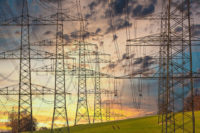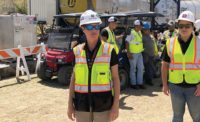Shortly after Texas lost much of its electric generation to problems related to cold weather—plunging almost 4 million customers in the state into darkness and cold for up to four days in mid-February—it was clear that equipment failures across the board were in part to blame. Frozen gauges at natural gas wellheads prevented enough gas from being delivered to power plants.
S&P Global Platts Analytics said about 13% of natural gas production was offline because of the cold weather. Equipment at power plants that received enough gas or coal failed and shuttered the plants. Blades on wind turbines froze.
The Electric Reliability Council of Texas lost 40% of the electricity—20,000 MW—that it expected to be online during the cold weather because of these problems. The main culprit was the lack of natural gas, ERCOT said, though problems with wind generation and an outage at a nuclear plant also contributed. To keep the entire system from failing, ERCOT ordered rolling outages across the state that didn’t end until Feb. 19.
“We could have had a much worse event,” if the rolling outages hadn’t been implemented, said Bill Magness, CEO of ERCOT in a news conference Feb. 19. The entire system could have failed.
In the wake of the outages, the Texas Legislature, Congress, the Federal Energy Regulatory Commission and the North American Electric Reliability Corp. have ordered investigations. Texas will be the first to explore the problems, with hearings scheduled for Feb. 25.
But fixes to prevent future outages, as technically feasible as they may seem, may be politically and economically untenable. A similar, but not as severe, winter outage occurred in Texas in 2011. A resulting FERC study recommended fixes. “There was a lot of head nodding,” after the 2011 report, says Rob Wilhite, a senior vice president of distributed energy at Black & Veatch. “Everyone agreed that winterizing power plants, the natural gas system,” were necessary. “But for most of the system, those improvements weren’t made.”
Fixes may have not been made because in the competitive Texas electricity market, power plant owners tend to avoid upgrades if it would make their power more expensive. “There’s always a balance between policies, regulation and the impact to the economy,” says Wilhite.
It’s common for power plants to be hardened in the North, says Jim Doull, executive vice president for generation for Black & Veatch. Portions of power plants may be enclosed and heaters placed on critical pieces of equipment. Texas utilities should “first and foremost, weatherize their power plants and pipelines,” says Michael Craig, assistant professor of energy systems at the University of Michigan.
But in Texas, fixes were not mandated because FERC has no authority over the Texas grid. The Texas grid is independently operated and separate from the two eastern and western national grids that power the rest of the nation. The arrangement keeps Texas from being regulated by FERC. It also keeps the state largely islanded and unable to get power from outside its borders. While that arrangement has been called into question after this year’s winter storm, even if the state agreed to be regulated by FERC, costly transmission interconnections would still have to be built. ERCOT could decide, though, that those interconnections would be cheaper than building additional generation within the state, Doull says.
Craig says ERCOT’s current seasonal planning, which is based on historical data, also is insufficient. “It is essential to look at expected future meteorology,” he adds, “because climate change is changing the weather.” Magness says the storm has set a new standard, and that ERCOT will be reviewing its planning methods.
However, the answer may not lie in preparing for every possible extreme, says Emily Grubert, assistant professor of civil and environmental engineering at the Georgia Institute of Technology. “Guarding against any possible extreme event purely from kind of a brute-force investment in the grid perspective is not that realistic for most infrastructure systems.”
Going forward, renewables and battery storage will become a greater party of Texas’ energy mix, say Craig. This storm presents a chance for planners to consider what that integration will look like.
“It isn't just about providing power, it's about making sure that people have access and about making sure that people are safe,” says Grubert. “I think we do see probably in our future a lot more conversations about the fact that we actually have an opportunity to remake a system that is doing both mitigation and adaptation work simultaneously.”








Post a comment to this article
Report Abusive Comment